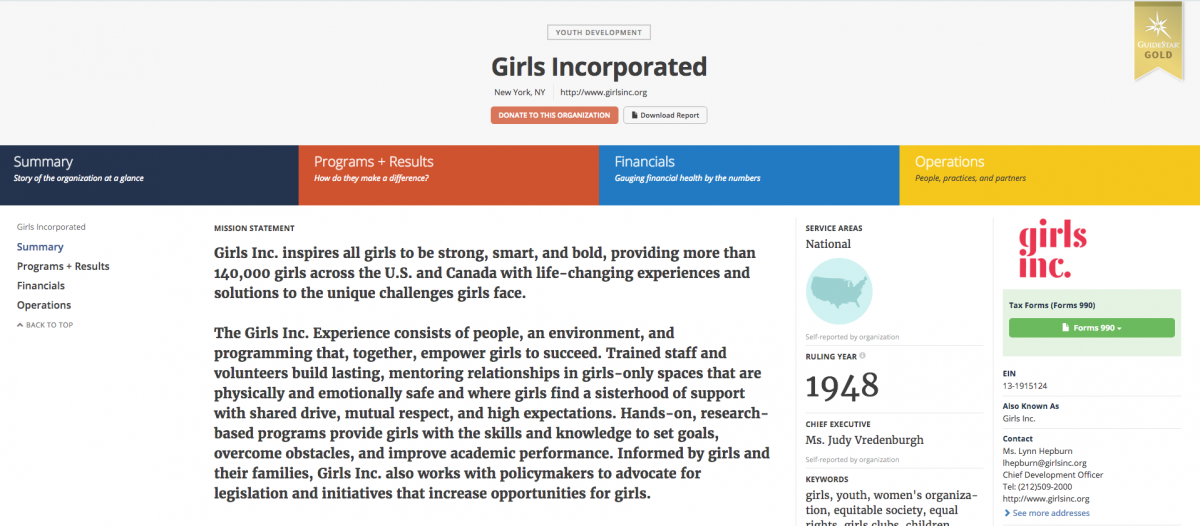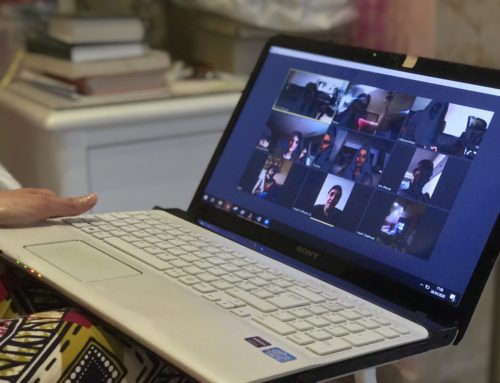 Effective media relations isn’t always about proactively pitching your organization’s story to reporters and editors.
Effective media relations isn’t always about proactively pitching your organization’s story to reporters and editors.
It’s also about making sure you are curating the right information in the places where reporters hang out to gather information.
Recently, we explored why it’s important to create a reporter-friendly online newsroom on your organization’s website to help ensure that you’re putting your best foot forward to journalists who might be interested in covering your nonprofit.
But your organization also needs to tell its story effectively in other spaces where reporters are likely to research nonprofits.
One of those spaces is GuideStar, the online repository of IRS tax forms for all registered U.S. nonprofits — and the home of a rapidly growing library of data and information about organizations that extends well beyond tax forms.
GuideStar has recently beefed up its nonprofit profile pages, which are the landing pages of sorts for all of the nonprofits in its database. The public — and reporters — use these pages as the gateway to the tax forms.
In the past, these pages were largely auto-generated — and focused almost exclusively on financial numbers.
But as the nonprofit world rightfully argues that impact is more important than overhead ratios, organizations like GuideStar are working to put the financial numbers in context.
As a result, they are providing nonprofits with opportunities to do much more than report on their salaries and expenses.
In GuideStar’s case, this means giving nonprofits the keys to telling the story about their work and impact on their public-facing pages. The new GuideStar profile pages include sections where nonprofits can share narrative reports about their programs and impact. They also provide charities with opportunities to provide contact information, social media links, as well as details about their governance practices and diversity measures.
This development matters if you’re looking to convince the media that your nonprofit has a positive story worth telling.
Many reporters regularly use GuideStar as part of their background research into organizations they are covering. In fact, GuideStar reports that more than 60,000 media members and researchers have used the site over the past six months.
It makes sense, then, for nonprofit media relations managers to spend some time building out their profile pages. After all, you now have an opportunity to tell your story in your own words to thousands of reporters.
It’s also worth noting that this exercise has benefits beyond framing your story to reporters. It also will help you position your organization to grantmakers and potential donors.
GuideStar reports that more than 7 million people visit its site annually — and many of those folks are donors who are looking to gain information about organizations they are thinking about supporting. Of that number, 35,000 are registered foundation staff members who use the site to research potential grantees.
All of these big numbers add up to a simple conclusion — you need to spend some time making sure your profile tells your organization’s story in your own words.
And yet, many nonprofits haven’t taken that step.
As I’ve dug through GuideStar’s site to look at the profiles of many of my favorite nonprofits, I’ve found that the majority of them aren’t filled out with even the most cursory information, like contact information or social media links.
What does this say to those that are viewing their profiles?
Some reporters and donors might see it as a sign that you don’t have enough resources to take the time to share this information. Others might see it as a sign that you’re trying to hide something.
In either case, you’re not sending the message that you have a story worth covering or an organization worth supporting.
The great news is that even if you haven’t yet spent a minute on your profile, the keys are in your hands. With a few hours of work, you can build a profile page that tells your story and sends a message to reporters and donors that you mean business.
What are the elements of a successful profile page? I suggest you start by looking at some examples. Groups like The National Audubon Society and the American Red Cross have a robust profile pages that clearly outline their programs and impact — and also includes links to all of their social media channels.
Once you’ve had the chance to check out some examples, you’ll want to spend some time gathering information around the following topics:
Programs
Each nonprofit has an opportunity to share information about its key programs. For each of your programs, you can describe the program, offer information about how those programs have been successful, metrics, and examples.
Charting Impact
GuideStar’s profile pages give nonprofits the opportunity to answer five key questions about impact in their own words:
- What is the organization aiming to accomplish?
- What are the organization’s key strategies for making this happen?
- What are the organization’s capabilities for doing this?
- How will they know if they are making progress?
- What have and haven’t they accomplished so far?
Organizations have a lot of leeway in terms of answering these questions. Some choose to write lengthy responses. Others choose to provide shorter, bulleted responses.
I recommend short and direct — with simple, clear language, such this example from Girls Inc.
Governance
The GuideStar reports also offer nonprofits the chance to share information about how they educate their boards, how they assess their chief executives, whether they regularly review their conflict of interest policies, and whether they’ve conducted a formal assessment of their boards.
Organizations can also choose to provide information about diversity among their leadership, board, and staff.
If your nonprofit can provide affirmative answers to the governance questions and offer information about its efforts around diversity, it’s a slam dunk to include this information on your report. It shows that you’re transparent and are committed to best practices — and sends a strong signal to the media that you mean business.
If you’re really committed to transparency, you can also provide a link to download your most recent annual report.
Contact information
If you’re serious about getting the media to cover you, make sure you take the time to add contact information — and have it link directly to a real person who monitors his or her email.
You can also provide links to your organization’s blog and its social media channels. Some group even choose to upload videos and photos to their pages.
Sites like GuideStar are important gateways for the media. Rather than spending time writing a meaningless press release, take some time to curate your profile page and ensure that you’re teaching the media about who you are and what you do.
Peter Panepento is principal at Panepento Strategies, a full-service content, digital, and social strategy firm for nonprofits and socially-minded companies. He was formerly an assistant managing editor at the The Chronicle of Philanthropy, where he led its transition into digital journalism and social media — a transition that included the creation of some of the nonprofit world’s richest online communities, the launch of a highly profitable webinar series, and the creation of new digital products such as the How America Gives giving database. He also serves as Nonprofit Marketing Guide’s adviser on public relations.






